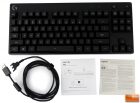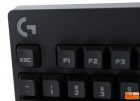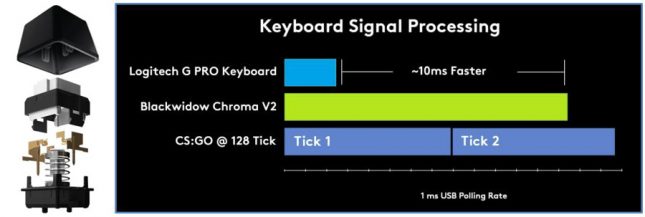Logitech G Pro Gaming Mouse and Keyboard Review
Logitech G Pro Gaming Keyboard
On the outset I have to admit that I’m not the world’s biggest fan of mechanical keyboards. First, I use laptops quite a bit so I’m very used to using the low profile, chiclet type keyboards and moving from that to a mechanical keyboard, I find my fingers “tripping” on the keys from time to time and I mishit keys here and there because the spacing is just different enough. Did I mention I’m also not the world’s most accomplished typist? Second, I do way more writing and business type work than gaming (life is hard, I know) so the criticality of feel and response time is typically not a priority for me. Finally, I dislike the increased volume of clack-clack-clack that can come with some mechanical keyboards (switch type dependent) though often this tends to be more of an annoyance to others in the area than to me personally. Still, for this review I kept an open mind – especially since I’ve limited time on mechanical keyboards and not experienced all of the various switches available. What I learned was surprising as you’ll see further on.
The unboxing of the Logitech G Pro Gaming Mechanical Keyboard was uneventful and I didn’t find any issues with this braided cable or any other visual defects that I could discern. In the box, in addition to the keyboard itself, was the aforementioned six foot braided cable, a pamphlets for warranty/legal info and, a single leaflet for how to insert the USB cable for those who’ve never laid eyes on a computer before.
The very first thing I noticed was how heavy the keyboard is relative to its size. It weighs 980g (2.16 lbs), yet is only 360.5 x 153 x 34.3 mm (14.2 x 6 x 1.4 inches) in size and that doesn’t could the weight of the cable. It’s certainly stout but that’s a good thing as a light keyboard could have the tendency to wander through the course of use. It’s compact for the same reason the cord is detachable – it’s meant to be carried from venue to venue. No worries about fitting it in a bag or the cable being damaged at the insertion point during transport. The compactness comes at the expense of the number keypad which is notably absent and another design item taken directly from their eSports gamers who said we don’t need no stinkin’ numberpad for gaming! A narrower keypad also affords more room for mousing which definitely a consideration when being packed into a room for a gaming competition. It’s overall design is like the G Pro Gaming Mouse – very utilitarian with only the word “PRO” engraved around the right side and a lone stylized G logo on the top left corner.
As mentioned, around back is the port for the braided cable to plug in and the cable itself has plastic prongs straddling a micro-USB connector on wing-like protrusion that not only help the user orient the cable correctly but adds a measure of stability to help protect the port should it receive some rough treatment. Smartly, this cable also matches their wireless mouse charge cables so can pull double duty when called upon.
The bottom features five flat rubber non-slip pads and a grooved diagonal design that may be decorative or a simple way to increase surface area for cooling or improving air flow. The are flip up feet in the rear with each side having two sizes to make three total angle setups to choose from.
Logitech is exceptionally proud of the performance of their keys and switches. As they should be. The Romer-G switches feel nice and responsive with no discernible click as found with some mechanical switches. Only 45g of pressure is need to actuate the switch at a travel distance of 1.5mm. Their combined actuation speed, keystroke signal processing, and USB polling rate all add up to a response time Logitech claims is 10ms faster than Razer’s Blackwidow TE keyboard. I’m not sure even a professional gamer can perceive such a minute difference in response time but computers/software can. With money and careers on the line, I’m sure every gamer wants every bit of an advantage they can get. Not only are the Romer-G switches precise but are rated for an amazing 70 million keystrokes which is way above the 20-50 million most other keyboard switches boast. Surprisingly, the keys themselves are relatively quiet and I didn’t find myself being put off by the sound. In fact, I typed this entire review using the G Pro keyboard and while I found myself getting used to it (I bet if I tracked my keystrokes, there would be a significant ‘backspace’ count), I don’t think I could live with it as my daily driver. Less because of it being a mechanical keyboard and more because I actually use the numberpad a fair amount and also prefer to have at least one pass-through USB port available.
As with the mouse, the RGB lighting was superb with bright, vivid, and accurate colors. That aspect of the keyboard I will miss as it really looks fantastic largely thanks to their exclusive Swiss-designed lens used to combine and focus the lighting. I own several (admittedly modestly priced) RGB keyboards and none compare to the lighting of this one. Like the mouse, the lighting preference can be saved on the device so using it on another PC won’t lose the settings. More on that up next where I look at the Logitech Gaming Software.













